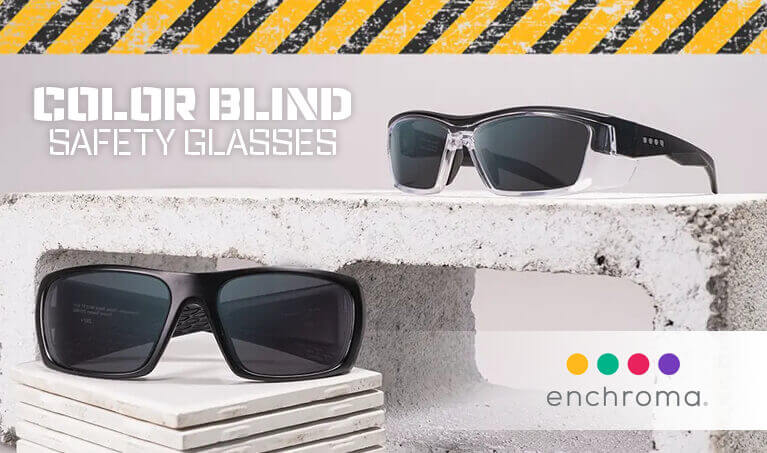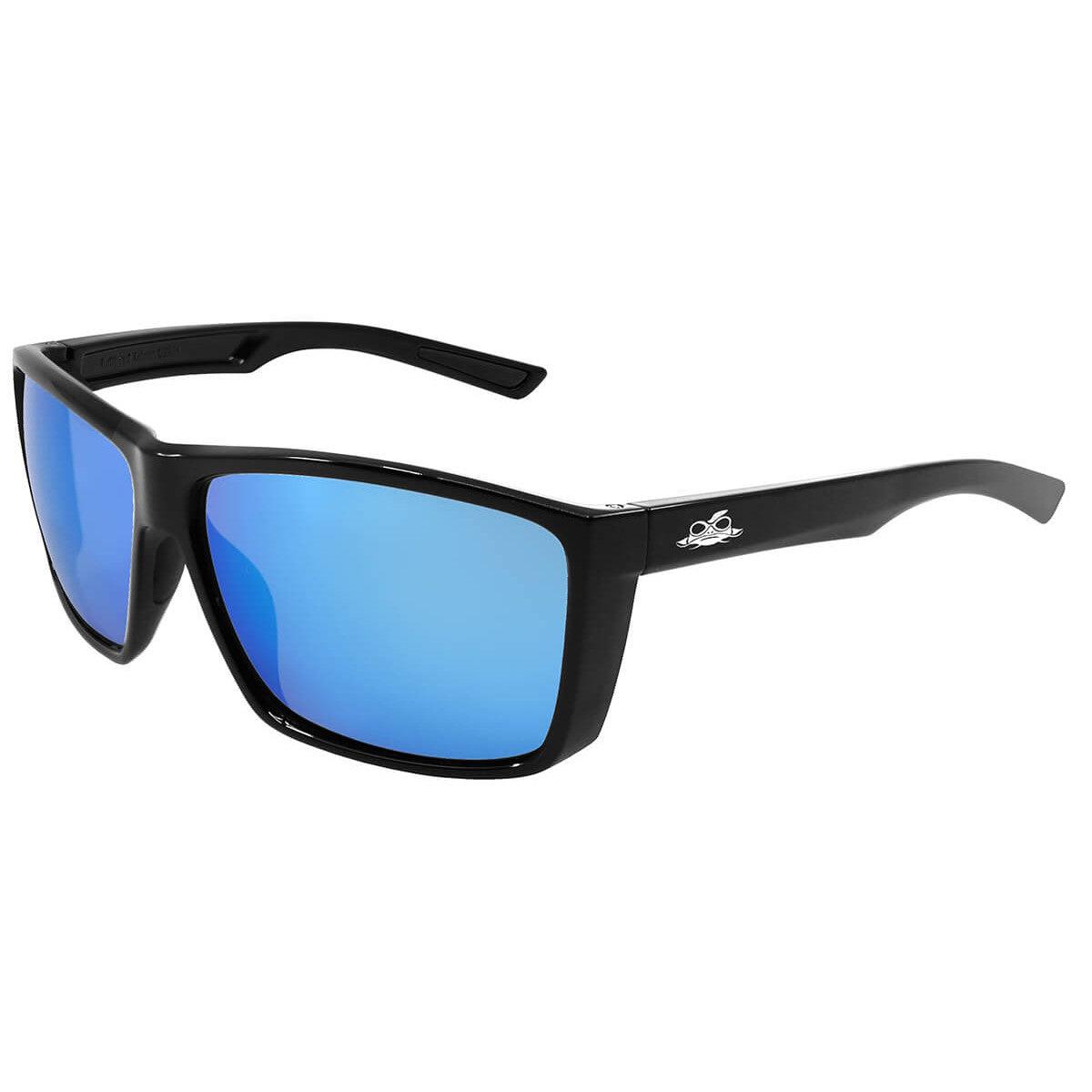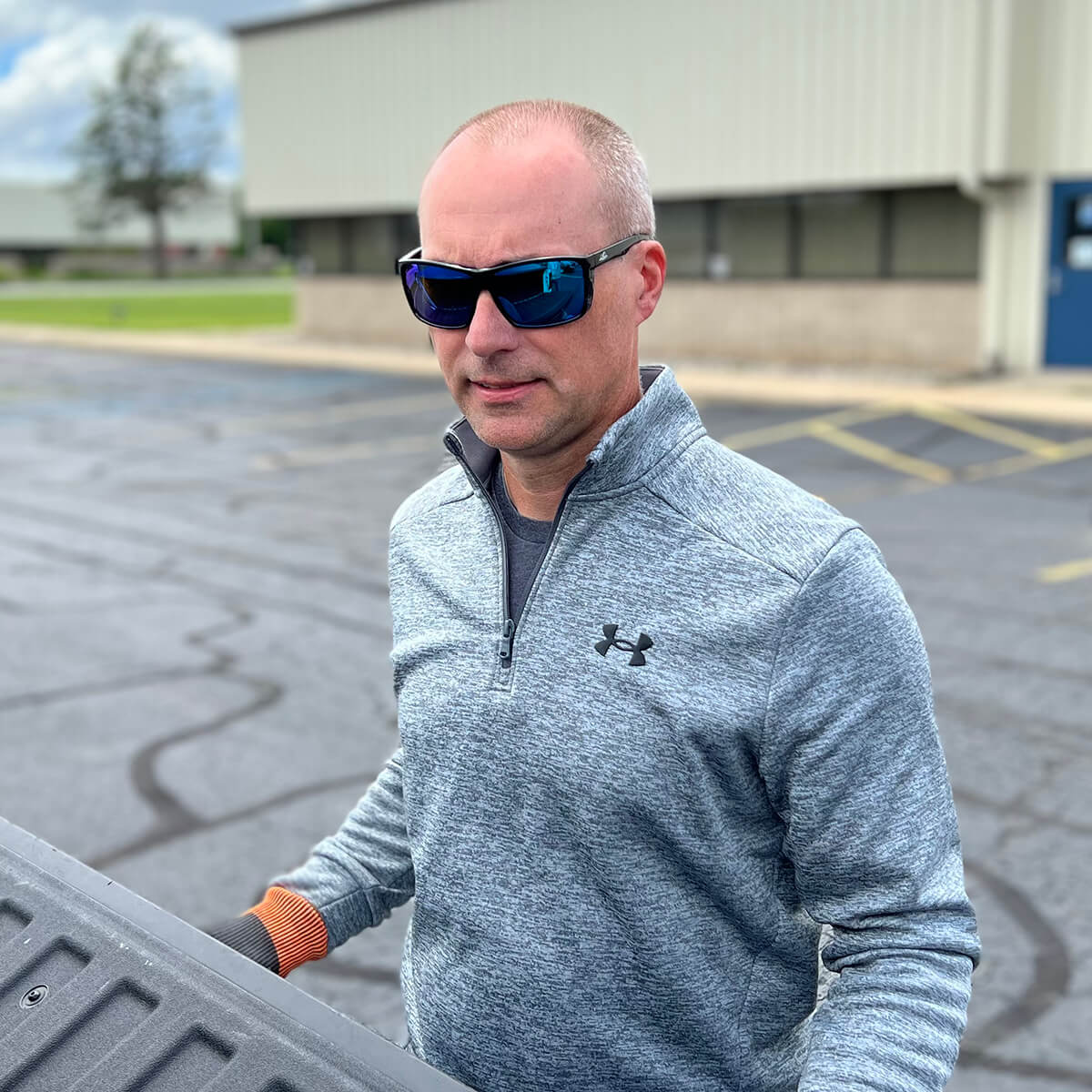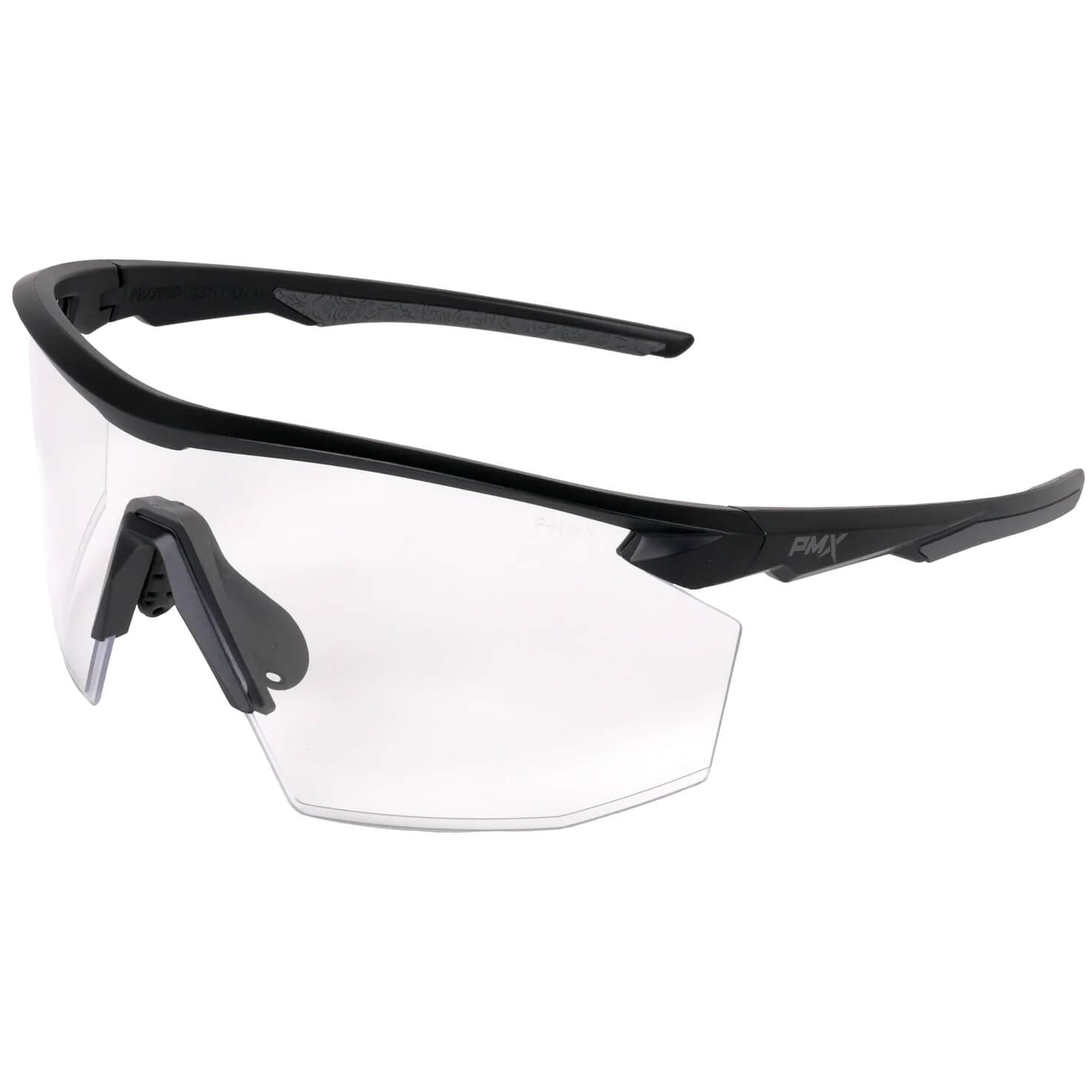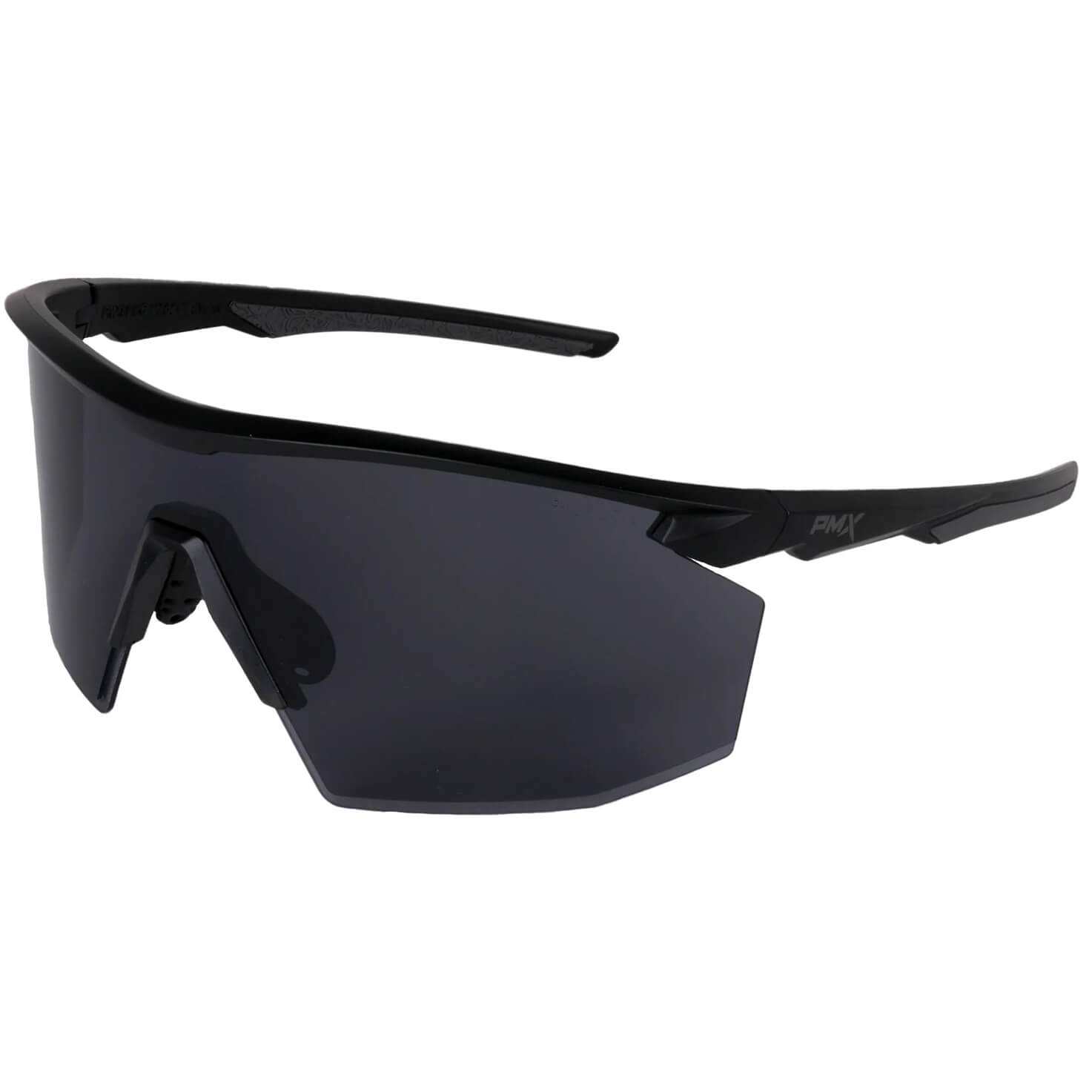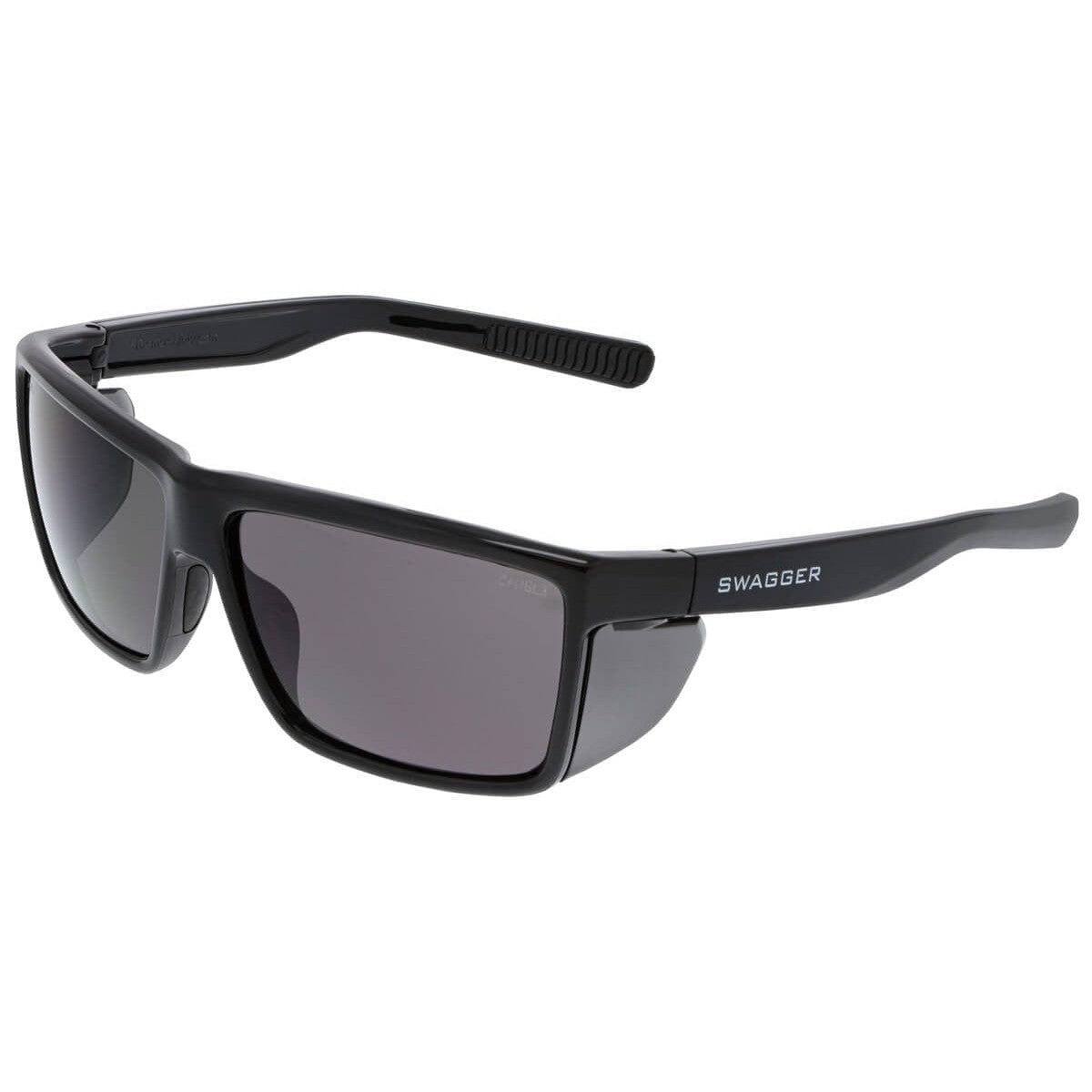Color blindness affects outdoor work like landscaping, construction, wiring, and maintenance. It also affects indoor jobs like sorting and reading charts and labels. EnChroma Color Blind Safety Eyewear helps those who are color blind both see their work more accurately and stay safe. Vision experts agree that color-blind eyewear certainly opens up possibilities for those with color blindness.
"Though color-blind glasses will not "cure" color-blindness, they give color-blind individuals an opportunity to see the world more accurately and experience a greater spectrum of colors while wearing the glasses." (All About Vision)
Types of Color Blindness
Color blindness is also known as color vision deficiency. The most common types are red-green color blindness caused by genetic conditions. Someone with normal color vision can perceive up to a million different color shades. A person with typical green-red color blindness, however, usually only perceives 10% as many shades as someone with normal color vision.
There are four broad types of color blindness:
- Protan accounts for about 25% of red-green color blindness. People with this type of color blindness tend to see greens, yellows, oranges, reds, and browns as being more similar shades of color, especially in low light. Additionally, purple often looks more like blue, pink appears to be gray, and red looks darker than normal and can appear black.
- Deutan color blindness results in red, yellow, green, and brown appearing similar, especially in low light. Those with this type may struggle to tell the difference between blues and purples or pinks and grays. They may also confuse green and yellow or blue and purple.
- Tritan color blindness is usually acquired later in life because of aging or medical conditions like glaucoma, cataracts, or age-related macular degeneration. Individuals with tritan color blindness typically do not see blue colors well. They may also struggle to tell the difference between blue and green.
- Monochromacy is a range of conditions sometimes referred to as types of achromatopsia. It can be graded as incomplete (partial) or complete (total color blindness). It is often associated with light sensitivity, photophobia, and glare sensitivity.
While limited, you can use the EnChroma Color Blind Test to help determine your type of green-red color blindness (deutan or protan). Of course, see an eye care professional for a complete exam if you’ve not recently done so.
EnChroma Color Blind Safety Eyewear
EnChroma color blind safety eyewear offers on-the-job color vision while also meeting ANSI Z87.1 impact standards. Their indoor and outdoor eyewear protects from UV radiation, dust, dirt, and splashes while providing vibrant color.
EnChroma color blind safety eyewear allows those who are color blind to better see colors in the work in front of them. This increases their productivity and helps keep them safe from workplace eye hazards.
EnChroma Outdoor Safety Eyewear
The Cx3 Sun Lens is for people with most types of color blindness. It comes in three different frame styles, two of which have Rx insert options.
For those with strong protan color blindness, the Cx3 Sun SP Lens also comes in three frame styles, two with Rx insert options.
EnChroma Indoor Safety Eyewear
The Cx1 Indoor DT Lens is also for most types of color blindness. It comes with two frame style options, both of which allow for Rx inserts.
EnChroma Safety Eyewear Frame Styles
The Martinez is a multi-purpose frame that is Z87-2+ impact rated. It has a rubberized, vented brow bar that is replaceable, adjustable nose pads, and dual-injected temples.
The Summit frame works well both for safety and as sports eyewear. Also Z87-2+ impact rated, it has removable side shields as well as silicone rubber nose pads and dual-injected temples.
The Panoramic is a non-Rx frame that is Z87+ rated and serves as multipurpose go-to safety eyewear. The TR90 textured inner service temples and the silicone rubber nose pads provide additional comfort.
EnChroma Cx Series safety eyewear for color blindness is indicated as such via engravings on the outside (temporal corner). Look for the following markings:
e = EnChroma
+ = Impact rated
s = Special-purpose lens (specialty filter)
Additionally, look for the Z87 symbol for assurance the frame meets ANSI Z87.1-2020 safety frame requirements for high mass and high-velocity impact. You’ll also find Z87-2+ marking on Martinez and Summit means indicating they can be used for Rx as well as non-Rx (i.e., Plano) lenses. The Z87+ marking on the Panoramic frame means it is for non-Rx (i.e., Plano) lenses.
For additional information on color blindness causes, symptoms, coping strategies, and solutions, visit EnChroma’s General FAQs.

